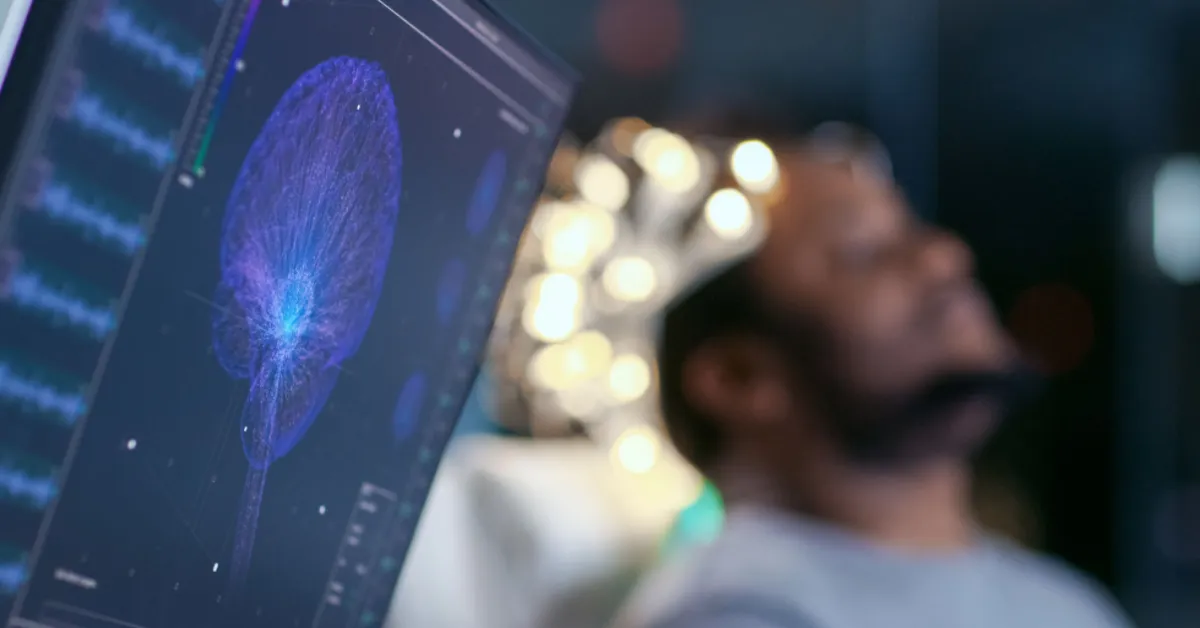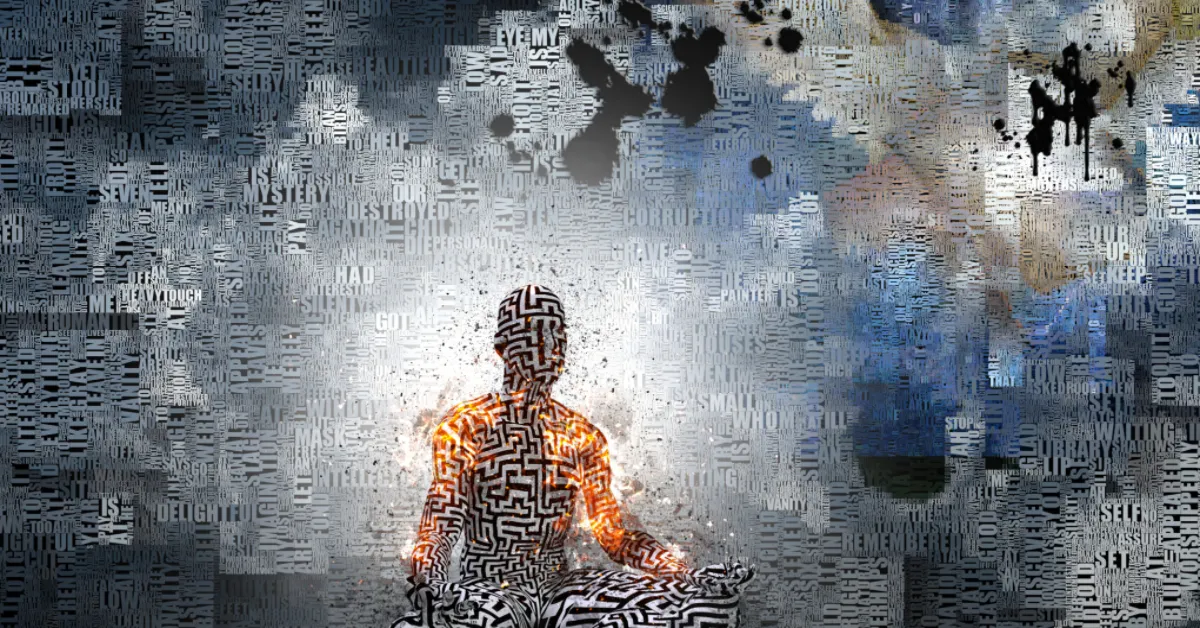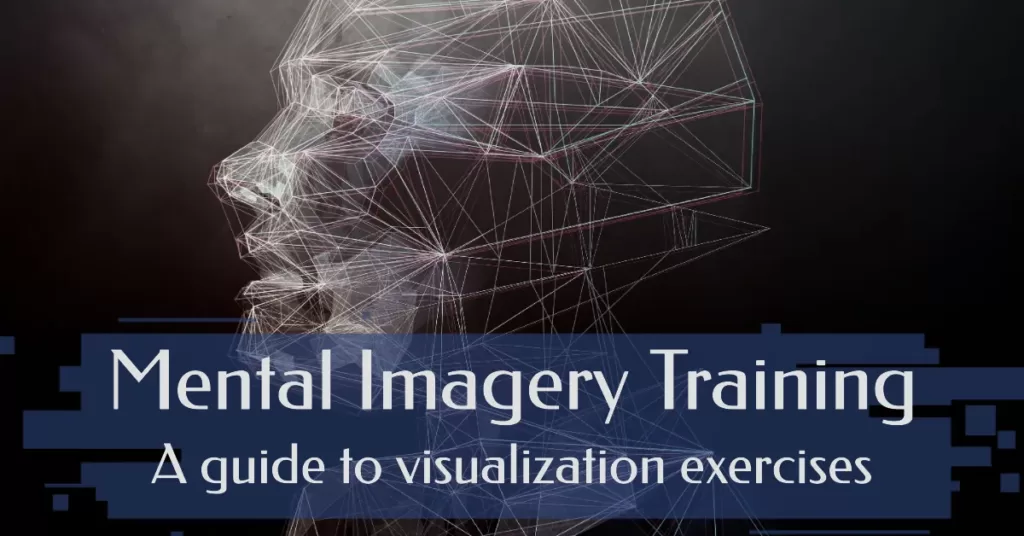Ever wondered how top athletes or successful entrepreneurs manage to perform at such high levels? They’re likely using a secret weapon you can tap into as well – visualization. You’ve probably heard about the power of positive thinking, but there’s much more to it than just wishful thinking. It’s actually backed by neuroscience and research shows that mental imagery training can help improve your performance in various areas of life. In this guide, you’ll learn all about visualization, from what it is and how it works, to beginner techniques and expert-level practices. Whether you’re looking to boost your personal development or up your game in professional sports, we’ve got you covered with practical tips on making the most out of your practice sessions. So let’s dive into the fascinating world of imagery training!
What is Visualization and How Does it Work?

You’ve likely heard of visualization, but understanding the mechanics behind this powerful mental tool can open up a new world of potential. It’s an intriguing blend of imagination and reality where you mentally rehearse or picture scenarios to enhance your performance or achieve specific outcomes – yet, how does it work for those with aphantasia who have difficulty forming mental images? To fully grasp the concept, we’ll dive into neuroscience-informed insights on neuroplasticity – illustrating how the mind truly has influence over matter – and explore the compelling power of mental imagery in shaping our reality.
Understanding the Concept of Visualization
Visualization’s essentially about creating a mental image or scenario, much like painting a picture in your mind’s eye. The process of understanding the concept of visualization begins with accepting it as an effective tool for personal development. It plays an integral role in imagery training, offering you the ability to mentally rehearse actions before physically performing them.
Neuroscience research shows that our brains don’t distinguish between real and imagined experiences. In other words, your brain reacts similarly whether you’re actually lifting a weight or just visualizing yourself doing so. This is what makes imagery training such a powerful tool.
Mastering visualization can greatly enhance performance across various fields from sports to public speaking. So, start harnessing this skill today – your brain is waiting for those amazing images you create!
Understanding Aphantasia: How Does It Affect Visualization Practice?
But what happens when the canvas of your mind remains stubbornly blank, a phenomenon known as aphantasia? You might wonder if you’re cut out for imagery training. Aphantasia refers to the inability to voluntarily visualize mental images. It’s not that you lack imagination; it’s more about how your brain processes information. Neuroscientific studies suggest that this condition could be due to differences in the structure or function of certain areas in your brain. However, don’t despair! While traditional visualization exercises may pose a challenge, there are ways around it. For instance, focusing on other senses like touch or smell during imagery training can be an effective workaround. Even with aphantasia, there’s potential for progress in developing a rich inner landscape, it just takes a different approach.
Insight into Neuroplasticity: The Mind Over Matter Principle
It’s truly fascinating how our brains have the capacity to adapt and change, a phenomenon scientifically known as neuroplasticity. This process called neuroplasticity is essentially your brain’s way of saying “mind over matter”. With consistent practice, you can actually reshape your neural pathways and strengthen or develop new connections.
This principle applies directly to imagery training. By consistently visualizing specific scenarios or actions, you’re flexing your mental muscles and rewiring your brain at the same time. Your repeated visualization exercises are not just an abstract concept; they’re physically altering your brain structure, thanks to neuroplasticity. In essence, through imagery training, you’re teaching your brain new ways of thinking and behaving- it’s powerful stuff! Understanding this neuroscience-backed principle provides a solid foundation for effective visualization practices.
Imagination vs Reality: The Power of Mental Imagery
You might be wondering how your imagination can compete with reality, and that’s where the power of mental pictures comes into play. While it may seem like an abstract concept, neuroscience has shown that our brains respond similarly to imagined events as they do to real ones.
This is where imagery training becomes a key player. When you practice visualizing actions or scenarios in your mind, you’re essentially training your brain for future experiences. The more vividly and accurately you can imagine these situations, the better prepared your brain will be when they actually occur.
So don’t underestimate the power of mental imagery. With consistent practice and refined technique, you might just find yourself achieving goals and overcoming obstacles in ways you never thought possible before.
Beginner Visualization Techniques to Get Started

Starting your journey into visualization can be an exhilarating and transformative path. You might begin with trataka, a concentration exercise known for its effectiveness in focusing the mind, before moving on to visualizing simple objects like a white dot, then advancing to more complex 3-dimensional shapes. It’s essential to gradually integrate color into your practice, and as you become more skilled, you’ll explore the ki flow (aka qi or bioenergy) using the inhale-exhale method – a technique that harmonizes energy flow within your body based on TCM, Reiki, and other esoteric principles.
Trataka: A Concentration Exercise
Let’s dive into trataka, a powerful concentration exercise that can sharpen your visualization skills. This imagery training technique hails from yogic traditions but has found favor in modern concentration-boosting methods for its focus-enhancing abilities.
In trataka, you fix your gaze on a single point, like a candle flame or small dot. Remaining undistracted, you aim to keep your vision steady and constant. The process might seem simple, but it calls for intense commitment and cognitive control.
This concentration exercise can boost memory recall and improve mental clarity. Just as physical workouts tone muscles, Trataka strengthens the brain’s “muscles'” responsible for focus and attention.
So if you’re looking to enhance your visualization ability or just want to improve focus, give Trataka a try; its benefits extend beyond mere imagery training.
Visualizing a White Dot
Imagine a crisp, white dot in your mind – it’s a simple yet powerful exercise known to sharpen your concentration. This is imagery training at its most basic level and involves visualizing a white dot.
The goal here isn’t complexity, but clarity and focus. To start, close your eyes and imagine the white spot against a black background. The stark contrast helps to keep distractions at bay while you concentrate solely on this image.
Practicing such visualization exercises can help enhance cognitive functions like attention, memory, and perception. It’s about forging new neural pathways through repetition and consistency.
Remember, the key to effective imagery training is patience. Don’t be discouraged if the image isn’t clear initially; with practice, the vividness of your visualizations will improve over time.
Advancing to 3-Dimensional Shapes
Once you’ve mastered the white dot, it’s time to push your mental dexterity further by visualizing 3-dimensional shapes. This next level of visualization exercises helps refine your ability to maintain focus and build a more dynamic mental landscape.
Start simple, with a cube. Picture its edges, corners, and faces in your mind’s eye. Then, see how it rotates or changes perspective. It might be challenging at first but don’t worry – this is brain training. Neuroscience tells us that our brains have the ability to change and adapt with practice; this is known as neuroplasticity.
Advancing to 3-dimensional shapes not only enhances your mental agility but also improves spatial reasoning skills, which are important for problem-solving in real-world situations. Keep practicing and remember: patience is key in visualization exercises.
Adding Color to Your Visualization Practice
Having explored 3-dimensional shapes in your imagery training, an exciting next step awaits you – adding color. It’s not just about making your visualization practice more vibrant; it’s about deepening the neural connections that make this exercise so effective.
Adding color to your visualization practice is like upgrading from a black-and-white TV to a high-definition color screen. Your brain responds more actively to colored images, thus enhancing the impact of the training. Try visualizing a red apple or a blue ocean and observe how these colors influence your perceptions and feelings.
Different hues can evoke different emotions and responses, helping you harness those reactions for better mental imagery. So don’t shy away from infusing vivid colors into your visual exercises – it’s another powerful tool in developing strong mental images.
Introduction to Ki Flow: The Inhale-Exhale Method
Ready to elevate your mindfulness practice? Let’s dive into the world of ki flow and explore the powerful inhale-exhale method. This technique harnesses the power of visualization and breathing to enhance mental clarity and focus.
Here’s how it works: you inhale deeply, visualizing positive energy flowing throughout your body. As you inhale, crystal clear energy enters your body, rejuvenating it, whereas as you exhale, you picture any negativities or stress leaving with your breath. This simple yet effective exercise can help quiet an overactive mind and bring a sense of balance.
Consistent practice can even promote neural changes leading to improved emotional control, self-awareness, mind-body connection, and most importantly – it serves as a potent introductory exercise to further mastering bioenergy manipulation practice.
Using Guided Imagery Training to Enhance Your Visualization Skills
As you delve deeper into your mindfulness journey, consider embracing guided sessions that aid in honing your ability to visualize – a critical aspect of ki flow. Guided imagery training is a potent tool that can significantly enhance your visualization skills. It employs systematic relaxation techniques and mental rehearsals to create vivid, multisensory mental images. These exercises are not just fanciful daydreams but are grounded in practical outcomes. They’re designed to condition the mind toward achieving specific goals or enhancing performance in various life areas. Even if visualizing doesn’t come naturally to you, guided imagery training can foster this skill through repeated practice. So lean into this method with an open mind and expect transformative results over time.
Now, how to practice guided imagery? That’s easy – simply find guided imagery meditation videos on the internet and listen to them while meditating. Your only task is to listen to the voice of your digital guide and imagine the scenery they ask you to visualize. By doing so, you ensure that your mind stays on track when practicing visualization meditation. It’s a very useful hack for people who tend to lose their focus easily.
Advancing Your Visualization: 5 Visualization Techniques for Experts

As you advance in your visualization journey, it’s time for you to explore new techniques that can deepen and enhance your practice with these advanced mind hacking techniques. Consider the memory palace technique, a method that uses imagined spatial environments to enhance recall. You might also delve into visceralization, a technique that engages the “main” five senses for a deeper visualization experience, or even experiment with visualizing body sensations such as warmth and muscle tension. From mastering the ki flow through chakras and bioenergy practices to controlling physiological aspects like blood flow and heart rate; these advanced methods are rooted in neuroscience and provide practical ways to take your mental imagery skills to the next level.
The Memory Palace Technique
Diving right into the memory palace technique, aren’t you curious how this ancient mnemonic device can boost your visualization skills? Imbued with neuroscience-backed principles, this technique is a powerful tool in imagery training. It involves visualizing a familiar place, like your home or office, and using it as a mental framework to store and retrieve information.
In practice, you associate each piece of info with specific locations or objects within your “memory palace”. The more vividly you visualize these associations, the stronger they become in your memory. This goes beyond simple memorization by engaging multiple senses and emotions, which strengthens the neural pathways associated with the memory you’re trying to store in your “database”.
The success of the memory palace technique rests on our brains’ inherent ability to spatially map our environment. So go ahead; imagine walking through your palace, picking up chunks of knowledge along the way.
Visceralization: Engaging Five Main Senses in Deep Visualization Practice
When harnessing the power of visceralization you’re not just picturing scenarios in your mind, but truly immersing yourself in them by engaging five “main” senses (or more – yes, humans have more than just 5 senses, e.g. nociception or thermoception). This practice involves creating an imaginary sensory experience to enhance memory and learning. Not only do you visualize the image, but also feel its texture, hear associated sounds, smell any aromas, and taste any flavors.
Neuroscience research suggests that our brains can hardly differentiate between real and imagined experiences. By using visceralization techniques to engage multiple senses in mental rehearsal, you strengthen neural pathways more effectively. The more vividly you can imagine these sensations, the more potent the memory becomes.
So as part of your imagery training routine, remember to integrate this multisensory approach for improved results.
From Imagining Warmth to Sensing It: Visualization Techniques for Body Sensations
Believe it or not, you’ve got the power to actually feel the warmth just by imagining it – let’s explore this intriguing aspect of the mind-body connection. Science confirms that our brains can’t distinguish between a vividly imagined experience and reality. This is where specifically structured visualization comes into play. This technique encourages you to create detailed mental images, in this case, imagining warmth.
The process may start with picturing yourself on a sunny beach or near a cozy fireplace. As you engage more deeply with these images, your body reacts accordingly – your skin might even register an increase in temperature! Visualization techniques for body sensations are a powerful tool to harness the brain’s potential and influence physical responses. With practice, you can learn to control various bodily sensations through visualization alone.
Fun fact: Tibetan monks use an advanced version of this practice to physically raise their body temperature. It’s called Tummo aka Inner Fire meditation.
Mastering the Ki Flow: Chakras and Bioenergy Practice
Just as you’ve learned to summon warmth through your mind, you can also unlock the power of bioenergy and balance your chakras, tuning in to the subtle yet profound energy that flows within you. Visualization can help activate this process, working in tandem with a solid understanding of chakras and bioenergy practice.
According to one of the most popular bioenergy theories, each of us has seven main chakras or energy centers located along our spine. These regulate various physical and emotional aspects of our wellbeing. Visualization exercises stimulate brain areas related to these aspects, aiding in balancing your chakras efficiently.
In addition to that, each energy center (or chakra) is assigned a specific color. Vividly imagining a specific color in a specific part of your body can influence your mood, stress levels, and even the physiology of your body even if you don’t believe in subtle energies. So if you’re a bit of a skeptical person, perhaps thinking of bioenergy as electrical impulses traveling through your nervous system can help you increase your confidence while practicing this technique.
Remember, it’s not magic but a practice-based effort. Engaging regularly with visualization exercises fosters familiarity with your inner energy dynamics while enhancing overall wellness.
Controlling Muscle Tension, Blood Flow, and Heart Rate
Through the power of your mind, you can indeed learn to control muscle tension, blood flow, and even your heart rate – it’s all about tapping into that innate ability we all possess. By combining relaxation techniques with focused visualization exercises, you can influence these physiological processes.
Imagine controlling muscle tension by visualizing each muscle group in your body relaxing one by one. Picture a warm glow spreading through your body as blood flow increases to key areas, enriching them with vital oxygen and nutrients. To regulate your heart rate, envision it slowing down or speeding up in sync with a calming melody or rhythm. I also recommend researching brainwave entrainment and cardiorespiratory coherence as understanding these phenomena will help you comprehend the true power of the human mind.
Remember: our minds are powerful tools when harnessed correctly. So practice regularly and witness the marvels of this neuroscience-backed technique unfold in real time!
How to Make the Most of Your Visualization Practice Sessions

To truly reap the benefits of your visualization practice and learn the secrets of meditation, it’s imperative to develop a consistent schedule and hone your ability to overcome challenges such as detail, duration, and distraction. As you transition from a beginner to an expert, you’ll need to make conscious efforts in assigning metaphors in visualization – this science-informed approach is foundational for enhancing mental imagery. Remember, monitoring progress is crucial; the measure of success lies not only in improved performance but also in mastering the art of visualizing with precision and control.
Developing a Schedule and Being Consistent
Establishing a regular schedule for your visualization exercises is crucial if you’re aiming to see substantial progress in your imagery training. Consistency can help reinforce the neural pathways involved in these exercises, allowing you to visualize more effectively over time.
Developing a schedule and being consistent might seem daunting at first, but it doesn’t have to be overly complicated or rigid. Start by setting aside a specific time each day for your practice – perhaps early morning or late evening when you’re least likely to be interrupted. Consistency is key: try not to skip sessions unless absolutely necessary.
This is about building mental endurance and enhancing cognitive flexibility through imagery training. Your consistency will pay off in improved visualization skills and overall mental performance.
Overcoming Challenges in Visualization: Detail, Duration, and Distraction
Having established a consistent schedule for your imagery training, you’re now ready to tackle the next step: overcoming challenges in visualization. One of the common hurdles is visualizing with “much detail”. This might seem overwhelming at first but remember that the brain processes images much like it does real-life occurrences. So, when you visualize in greater detail, it helps your neural networks to form stronger connections. Another challenge lies in maintaining the duration of your visualization exercises without getting distracted. Additionally, using techniques such as mindfulness meditation can enhance focus and concentration during these exercises. Take this journey one step at a time, gradually improving on the clarity, depth of detail, and duration of your visualization practices.
From Beginner to Expert: Progressing in Visualization Techniques
You’re ready to level up, aren’t you? Now that you’ve gotten a grip on the basics, it’s time to delve into more advanced strategies and propel your mental prowess to new heights. As part of advancing in imagery training, consider involving all your senses. Studies show that incorporating smells, tastes, and physical sensations can enhance the effectiveness of visualization exercises.
Furthermore, try progressing in visualization techniques by layering complexity onto your images. Start with simple shapes or objects then gradually add details and movement. This strategy is neuroscience-informed and helps develop a robust mental muscle memory.
Apart from that, it would be wise to make the scenery move. E.g., as you’re imagining being in the forest during your meditation, start visualizing birds flying, squirrels climbing and running on trees, as well as bushes swaying in the wind. Make it as realistic as possible and convince your brain that the scenery is real.
Next, learn how to visualize effectively in distractive environments (preferably with eyes open). Mastering this skill shall serve you well. As you might not always have the time to lie down, close your eyes, and relax – it’s important to be able to make use of your mental skills when you find yourself in a difficult situation. Although the nature of the meditation itself might be somewhat mystical, your goal is to learn practical skills you can use in everyday life.
Lastly, practice consistency. Like any form of training, regularity is key to improvement. Start with short daily sessions then gradually increase their duration as your skills sharpen.
Consciously Assigning Metaphors in Visualization
Think of your thoughts as a vast ocean, and each metaphor you consciously assign in your mental exercises is like a unique sea creature inhabiting it. This concept of consciously assigning metaphors in visualization is deeply rooted in neuroscience. When you create these vivid, symbolic images, you’re not just enhancing your imagination – you’re actually strengthening neural pathways involved in learning and memory.
But how do you go about this? Start by selecting an aspect of your life or goal that needs attention. Then, creatively represent it with an image or metaphor that resonates with you. For instance, if you’re aiming for calmness amidst chaos, imagine yourself as a serene lotus floating on turbulent waters. With practice, these metaphors become powerful tools for shaping your mental landscape.
Monitoring Progress: The Measure of Visualization Success
Having explored the concept of consciously assigning metaphors in visualization, let’s now delve into a crucial part of imagery training: monitoring progress. This goes beyond simply performing exercises; it involves consciously recognizing and tracking improvements over time. You might wonder, how can one measure success in something as abstract as visualization? Well, brain imaging studies have shown that regular imagery training can lead to physical changes in the brain. Those changes are related to skill acquisition and performance enhancement. Although it’s problematic to monitor these changes regularly, you can note down any improvement in your ability to visualize vividly and accurately or simply measure the time you can last for during your visualization sessions. In addition to that, you can monitor if the sensations related to your visualization practice are getting stronger. It’s like exercising your muscles; over time, you’ll notice physical growth, but even without measuring the muscles directly, you can easily tell if you can lift more weight each quarter. Keeping track of development is an integral part of this journey toward mental mastery.
Mental Imagery Training in Personal Development

Mindfulness and self-awareness play a crucial role in personal development, especially when it comes to mental imagery training. Simple stress management techniques can greatly enhance your ability to visualize and control your thoughts, providing a practical way to navigate through life’s challenges. By programming your mind with mental conditioning, you’re essentially shaping the neural pathways of your brain, fostering resilience and allowing for positive growth and higher performance levels.
The Role of Mindfulness and Self-Awareness
Imagine controlling your thoughts like a master puppeteer, it’s not fantasy, it’s mindfulness and self-awareness in action! These skills are essential when engaging in imagery training. By honing your ability to focus on the present moment without judgment (mindfulness) and understanding your thoughts, feelings, and actions (self-awareness), you’re paving the way for effective visualization exercises.
Combining these practices with imagery training can enhance cognitive performance and emotional regulation. It’s like fine-tuning an instrument; mindfulness sharpens attention while self-awareness provides insight into what needs adjustment. This blend allows you to create vivid mental images that are truly transformational.
And lastly, it’s not about perfection but progress. So start small, stay consistent, and watch as your inner world transforms through mindfulness and self-awareness-enhanced imagery training.
Programming the Mind with Mental Conditioning
This approach utilizes imagery training to effectively shape your thoughts and reactions. In essence, it’s about coaching your brain to respond in specific ways to certain situations by repeatedly visualizing those scenarios.
Since our brains can’t differentiate between real experiences and vividly imagined ones as they both stimulate similar neural pathways, when you engage in consistent imagery training, you’re essentially re-wiring your brain for success – be it overcoming fears or mastering new skills. It’s like updating the software of your mind: the more you practice these visualization exercises, the more efficient and effective they become. Remember, repetition is key here – think of it as exercising your mental muscles.
Stress Management Techniques
When life’s pressures seem overwhelming, it’s time to arm yourself with effective stress management techniques that can help calm your mind and soothe your soul. Science supports the use of imagery training as a powerful method for combating stress. By visualizing peaceful scenarios, you’re able to tap into the relaxation response in your brain which helps counteract the body’s stress response.
Practicing deep breathing exercises is another technique that encourages relaxation by slowing down your heart rate and lowering blood pressure (remember when I mentioned cardiorespiratory coherence earlier?). Also, progressive muscle relaxation, where you tense and then release different muscle groups, has been shown to reduce anxiety levels.
Remember, consistency is key when using these stress management techniques. Regular practice can significantly improve your ability to cope with daily stressors in a healthier way.
Visualization Exercises in Professional Sports

You’ve likely heard of the pivotal role visualization meditation plays in sports, providing athletes with a mental edge to enhance their physical performance. But have you delved into the fundamentals of mental rehearsal training and how this science-backed method can fine-tune your skills? Or explored advanced techniques like Neuro-Linguistic Programming (NLP) and other mental coaching strategies that could propel you toward higher athletic triumphs?
The Role of Visualization Meditation in Sports
Athletes worldwide are discovering the game-changing power of visualization meditation, transforming their performance and setting them on a path to unprecedented victories. This practice is not just for those seeking Olympic glory but can benefit anyone aiming to improve in their chosen sport.
Visualization meditation involves mentally rehearsing your performance, creating a powerful visualization that can help enhance your physical abilities. It’s more than just daydreaming about success; it’s an intentional process where you engage all your senses to create a vivid experience in your mind.
Neuroscience shows us that this technique activates similar brain regions as when we’re physically executing the actions. Medalist or novice, using this tool can lead to increased confidence and improved execution under pressure. So start incorporating it into your training today to experience some additional benefits including improved physical performance as well as increased mental toughness and resilience.
The Fundamentals of Mental Rehearsal Training
To truly harness the power of mental rehearsal, it’s crucial to understand its fundamentals. At its core, mental rehearsal training involves using imagery training techniques to vividly imagine and rehearse specific actions or scenarios in your mind. This not only prepares your brain for the actual task but strengthens specific neural pathways, thus, allowing you to aggregate marginal gains and improve your sports performance even more.
In essence, you’re practicing without physically moving a muscle! It’s key to focus on details – feel the sensation, hear the sounds, see the environment. The more realistic your visualization, the more effective your mental rehearsal will be. But keep in mind that it’s quality over quantity – give depth to every imagined scenario for optimal results.
Advanced NLP and Other Mental Coaching Techniques for Athletes
It’s not all about physical prowess; advanced techniques like Neuro-Linguistic Programming (NLP) and other mental coaching strategies play a significant role in an athlete’s performance. NLP helps professional athletes improve their mental game, focusing on how we perceive the world and react to it. This technique can be customized for individual needs, making it highly effective for diverse athletic disciplines.
The essence of these mental coaching techniques is visualization and positive self-talk, which can significantly enhance performance by priming the mind for success and increasing self-confidence. Regularly practicing such exercises helps athletes stay calm under pressure, maintain focus during games, and recover from setbacks quickly. So remember, achieving peak performance isn’t just about physical training; incorporating advanced NLP and other mental coaching techniques is equally vital for athletes.
Frequently Asked Questions

Q: What is the purpose of using positive visualization exercises in meditation?
Visualization exercises play an integral role in meditation practice. They help you get into a more relaxed state, channeling positivity and imparting loving-kindness toward yourself and others. This doesn’t mean it’s a quick fix, but rather, a technique to foster positive feelings, focus, and unwavering determination to move forward toward what you want to achieve.
Q: How detailed should one be when trying to visualize in meditation?
When you’re practicing visualization meditation, try to use as much detail as possible. This could include textures, colors, sensations, and even emotions. The inclusion of fine details facilitates a more comprehensive and profound mental picture, boosting the impact of the exercise. In some cases, you might even experience synesthesia – a natural phenomenon where your senses get mixed up and you start tasting sounds or hearing colors.
Q: Is mentally picturing a specific scenario a part of simple visualization exercises?
Yes. One of the primary techniques and tools used in simple visualization exercises involves mentally picturing a specific scenario you’d like to happen. This could range from achieving your goals to imagining yourself in a peaceful and relaxing environment or even practicing a sports skill.
Q: What guide is recommended for those aiming to deepen their meditation practice?
More exotic deep meditation practice is described in depth in my book “Becoming a Psychonaut” – It provides instructions and techniques you can apply in your daily meditation practice, highlighting how to use visualization effectively to foster tranquility and progress toward desired outcomes.
Q: Can you effectively achieve relaxation through visualization and meditation?
Yes, visualization exercises help in relaxation. They involve creating calming, positive images in your mind, which help to create a mental sanctuary, promoting relaxation and a shift from negative to positive feelings.
Q: What does academic research say about visualization exercises and the achievement of goals?
Academic research consistently points toward the positive impact of visualization on achieving goals, controlling one’s mood and physiological responses, managing habits, as well as priming the brain for certain tasks. Visualization exercises help in shaping mental patterns and attitudes conducive to success, catalyzing personal growth and progress toward set objectives.
Q: What proven benefits are there to using visualization in meditation?
Using visualization in meditation practice can help foster a plethora of benefits. Beyond relaxation and positivity, it can also enhance focus and self-awareness, improve performance, help manifest goals, foster kindness toward yourself and others, as well as improve physical and mental skills.
Q: How does guided imagery align with visualization meditation?
Guided imagery is a powerful tool in visualization meditation. It directs and focuses the imagination to achieve relaxation, reduce stress, and move toward personal goals. It’s a pre-structured way to use visualization exercises to manifest what you want to achieve. Additionally, listening to someone else’s voice giving you instructions regarding what to focus on, makes the whole practice much easier.
Q: How can I properly use visualization techniques and tools in my meditation practice?
Effectively using visualization techniques and tools entails consistency and detail. Early in your meditation practice (or even before), build a mental picture of what you want to achieve or an environment that brings you peace. Imbue it with as much detail as possible and revisit this image regularly during your practice. This same principle applies to cultivating positivity and loving-kindness as well.
Q: Are there any advanced techniques beyond simple visualization and visceralization?
Yes. There is also mind hacking (aka mind programming) where you bypass the psychic censor and engrave specific instructions deep into your subconscious mind, there is NLP, mental conditioning, and even advanced occult practices allowing you to shape your internal reality and experience deep personal transformation.
Conclusion

You’ve garnered considerable knowledge about the immense power and potential of visualization and mental imagery training, alongside its role in personal development and professional sports. You’ve learned about basic and advanced visualization techniques as well as tips on maximizing the effectiveness of your practice sessions.
Bear in mind that visualization is not merely using your imagination or daydreaming; it’s a deliberate and systemic practice that can rewire your brain and bolster your mental fortitude. From the onset, with beginner visualization techniques, through the escalation toward advanced methods, the key is consistency and intentionality.
Whether your goal is to enhance your personal development, spur on your professional endeavors such as sports and business, or support your spiritual practice, visualization exercises serve as formidable tools to achieve success. Take the time to implement these practices into your daily routine and remember not to rush the process.
As you continue with your journey in visualization, know that success is not overnight and sometimes you may not even notice the subtle shifts, but rest assured, the changes are happening within you. So, integrate these techniques into your life, master the art of mental imagery, and step into a more confident, successful, and fulfilling life.
And finally, remain aware that visualization is the language of the mind. Speak it, and your mind will respond.




